While it might not be intuitive to the music listener enjoying their favorite albums at home, from the very first recording that was ever made circa 1860 until now, every single recording of music has had equalization applied to it to produce a unique document of a recorded musical event.
Sometimes the applied equalization was inadvertent and due to the limitations of the equipment used to record the music, and at other times the equalization was a function of the venue's acoustics where the music was recorded.
Sometimes the applied equalization was artfully purposeful as is done in contemporary recording studios to produce a well balanced and enjoyable document of a musical performance.
We are blessed that the often unheralded heroes of the recording arts have documented musical performances for us from the very first known recording of April 9, 1860, when French luminary Édouard-Léon Scott de Martinville recorded Au Clair de la Lune on the phonautograph he invented and patented, until now, with the sophisticated recording capabilities of the present day.
Music is central to our human experience and is believed to have evolved about 40,000 years ago. Until April 9, 1860, if you wanted to listen to music you listened to live performances of music. Then on that pivotal day in April of 1860, something magnificent happened, a recording of music was created that documented Au Clair de la Lune, which ended up changing how we appreciated and documented music forever.
Humanity's entire recorded music canon - from the very first recording to the most recent one - is of enormous historic importance to the musical arts specifically, and to world culture and civilization broadly. Music is part of who we are at a very fundamental level.
It can be an immensely gratifying experience to become more familiar with all of the parts of our musical history and legacy, as a well-rounded person who appreciates music, history, and the rich cultural achievements contributed by our fellow citizens on Planet Earth.
As a young man I had the very fortunate experience of being able to work on a detail within the USA's Library of Congress, in the Congressional Research Service, which is a non-partisan think-tank which works exclusively for the United States Congress, and has provided policy and legal analysis to committees and Members of both the House and Senate, for over a century.
That detail with CRS was one of the highlights of my young life, and was a real eye-opener as to the importance of what the Library of Congress does to enrich people's lives on so many levels.
The Library of Congress is an amazing place that "collects, preserves & provides access to its universal collections" that makes up the fabric of the culture and history of the United States.

National Audio-Visual Conservation Center in the USA.
One of the jewels in the crown of the Library of Congress is the National Audio-Visual Conservation Center, who has archived our recorded music canon so that the generations to come will be able to enjoy and explore our recorded music heritage, and of course other countries and individuals have embarked upon similar efforts to archive their historic music collections.
As just one small example of their incredible music archive, the National Audio-Visual Conservation Center digitized 10,000 78 rpm records for the National Jukebox that are freely available for music enthusiasts to listen to.
The focus of this introductory article is to acquaint the reader with the use of equalization in the recording arts over the various eras of recording, and as such to show how equalization is still an important topic for music enthusiasts today.
Let's do a brief overview of the history of recording, and take a look at how both inadvertent and purposeful equalization contributed to the different eras of recording.
Very generally speaking, the history of the music recording arts can be divided into the acoustic era (1860 to 1925), the electrical era (1925 to 1945), the magnetic era (1945 to 1975), and the digital era (1975 to the present).
The Acoustic Era of Recording (1860 to 1925)
During the acoustic era (1860 to 1925) recordings were made by musical instruments playing into recording horns, or by vocalists singing into recording horns, which vibrated a diaphragm at the small end of the horn, which had an attached stylus that etched those vibrations into wax cylinders or discs.
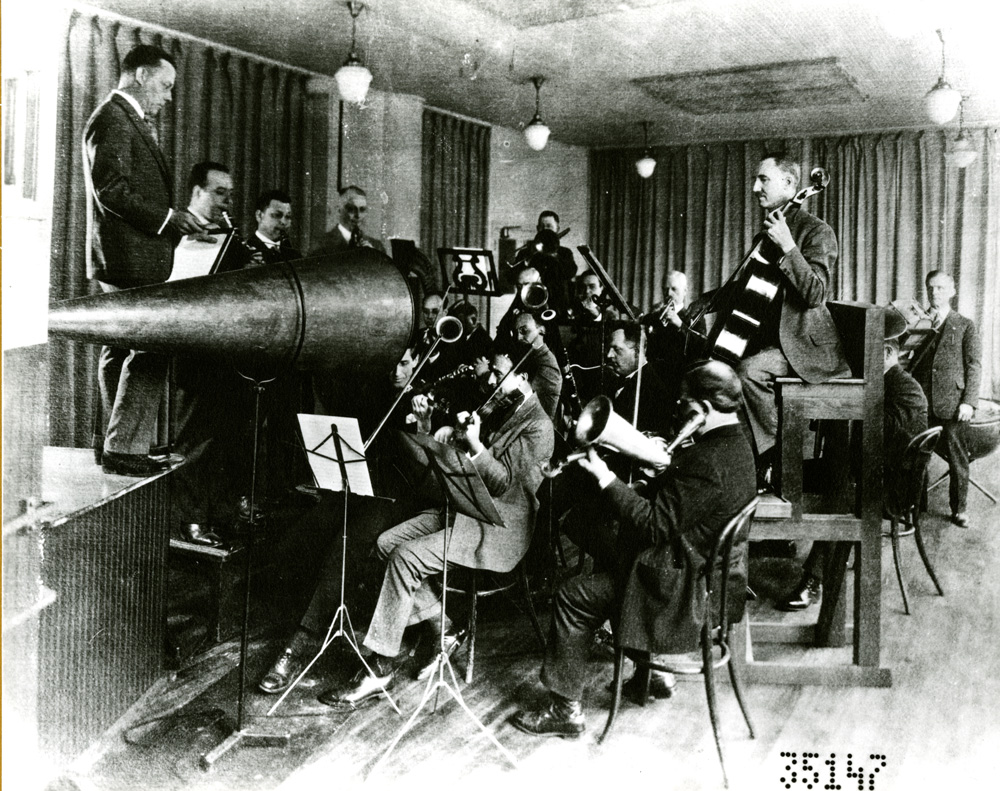
Early acoustic recording session. Photo courtesy of the US Library of Congress, photo LC-35147.
Equalization during the recording process was performed by varying the distance of the musicians from the horn, or by using horns of various sizes, flairs, and thicknesses, for example, or by varying the size, construction, or materials used in the diaphragms and styluses.
While some of the equalization was purposeful as described above, much of the equalization was inadvertent, as the early recording horns were limited in their frequency response over a range of approximately 100 Hz to 2500 Hz, or what we would call the the bass (60 to 250Hz), the lower midrange (250 to 500Hz), the midrange (500 to 2000Hz), and part of the upper midrange (2000 to 4000Hz) regions that we refer to today.
That's actually an impressive frequency range for vintage recording technology, as typical recordings of today only add to that range in the sub-bass (20 to 60Hz) range, the presence region (4000 to 6000Hz), and the brilliance region (6000 to 20,000Hz), which spans the 20 Hz to 20,000 Hz of human hearing that is considered important in the recordings of today.
To playback those acoustic recordings the process was reversed, where a disc or cylinder of recorded music was rotated, a stylus read the grooves, vibrated the diaphragm, which amplified the music through the horn for the listener to hear.
Depending on the nature of the stylus, diaphragm, and horn used in the playback audio system, the resulting music performance also experienced a form of equalization during playback.
You can read a more detailed account of the acoustic era of recording at The Leopold Stokowski Legacy website HERE.
You can listen to recordings from this period at the Library of Congress HERE.
The Electrical Era of Recording (1925 to 1945)
Starting around 1914, during the acoustic era of recording, the research divisions of Bell Laboratories and Western Electric employed a massive workforce to develop technologies that would make long distance telephone communication that could span the USA possible.
Around 1920 Bell Labs also engaged research teams to develop an electrical recording phonograph system, and to develop a sound recording system for films to be shown in cinema theaters.
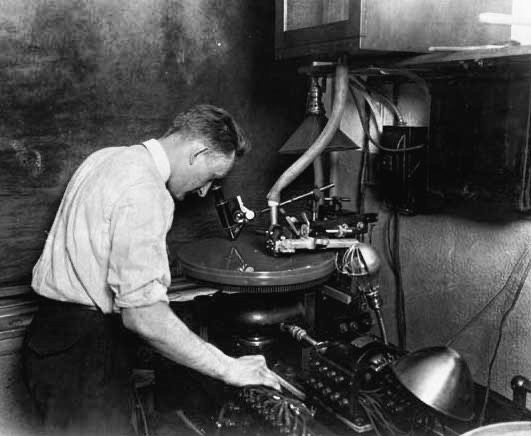
Westrex electrical recording system. Photo courtesy of the The Leopold Stokowski Legacy website.
The technologies that resulted from this research would eventually provide the technological basis for the Westrex electrical recording system, which was licensed to a number of record labels and film companies in 1925.
Development of electrical recording proceeded at a rapid pace during the electrical period, with the introduction of substantial pre- and post-equalization of recordings to improve the signal to noise ratio in the high-frequencies (J. Audio Eng. Soc., Vol. 33, No. 4, 1985 April, History of Disk Recording, John G. Frayne).
The soundtrack of the romantic musical film One Night of Love was recorded with these techniques and won an Academy Award for Best Sound.
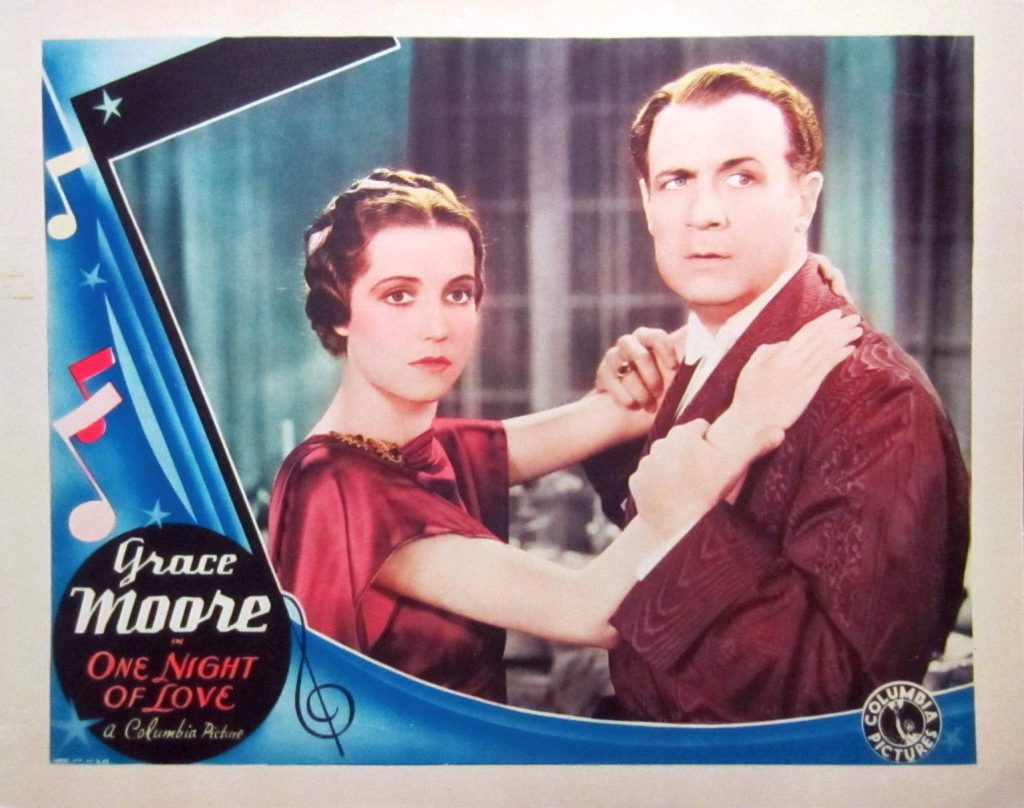
One Night of Love is a 1934 American Columbia Pictures movie that used adjustable equalization to win an Academy Award for Best Sound. Photo is public domain, courtesy of Wikipedia.
During the electrical era of recording every step in the signal chain provided a certain amount of inadvertent equalization just by its presence, while the addition of purposeful electronic pre- and post-equalization was utilized to artfully shape the raw recorded sound in order to provide a higher-fidelity presentation.
The frequency range of 100 Hz to 2500 Hz of the acoustic recording era was expanded from 50 Hz to 6000Hz for early commercial use in the electrical recording era, with frequencies extending all the way to 15,000 Hz in controlled laboratory conditions.
During this period, in addition to the wider frequency bandwidth, harmonic distortion was also reduced, sound "images" became more realistic, more of the higher harmonics of musical instruments were captured in the recordings, and dynamic range and noise issues were improved.
Also during this period of 1920s, the use of adjustable equalization for audio was introduced by John Volkman at RCA to equalize the sound of motion picture theater sound playback systems, in an attempt to address how bad those audio systems sounded at the time.
Volkman's contribution of adjustable equalization was a pivotal moment in the electrical era of recording, and his application of adjustable equalization would contribute substantially to the sound quality realized in the eras of recording yet to come.
You can read a more detailed account of the improvements realized during the electrical era of recording at The Leopold Stokowski Legacy website HERE.
The Magnetic Era of Recording (1945 to 1975)
The roots of magnetic recording go all the way back to 1898 when Valdemar Poulsen in Denmark built and patented the first working magnetic recorder (for the early history of magnetic recording I encourage you to read the The History of Magnetic Recording by Steven Schoenherr, University of San Diego, presented at IEEE Magnetics Society Seminar, UCSD, 2002 Nov. 5 HERE).
However, it would be decades later before magnetic recording technology matured into the magnetic tape and Ampex recorders that we typically recognize as the start of the magnetic era of recording for high-fidelity music.
As Dr. Schoenherr eloquently documents in his paper, we can thank the American musician, entertainer, and movie star from Washington State, Bing Crosby, for popularizing the use of magnetic recording, and later for financing the expansion of Ampex production, and distributing the Ampex recorders to radio networks and recording studios.
By doing so, Bing Crosby kicked off the beginning of "the high-fidelity era" in audio when LPs were produced using music recorded on magnetic tapes with the Ampex tape recorders.
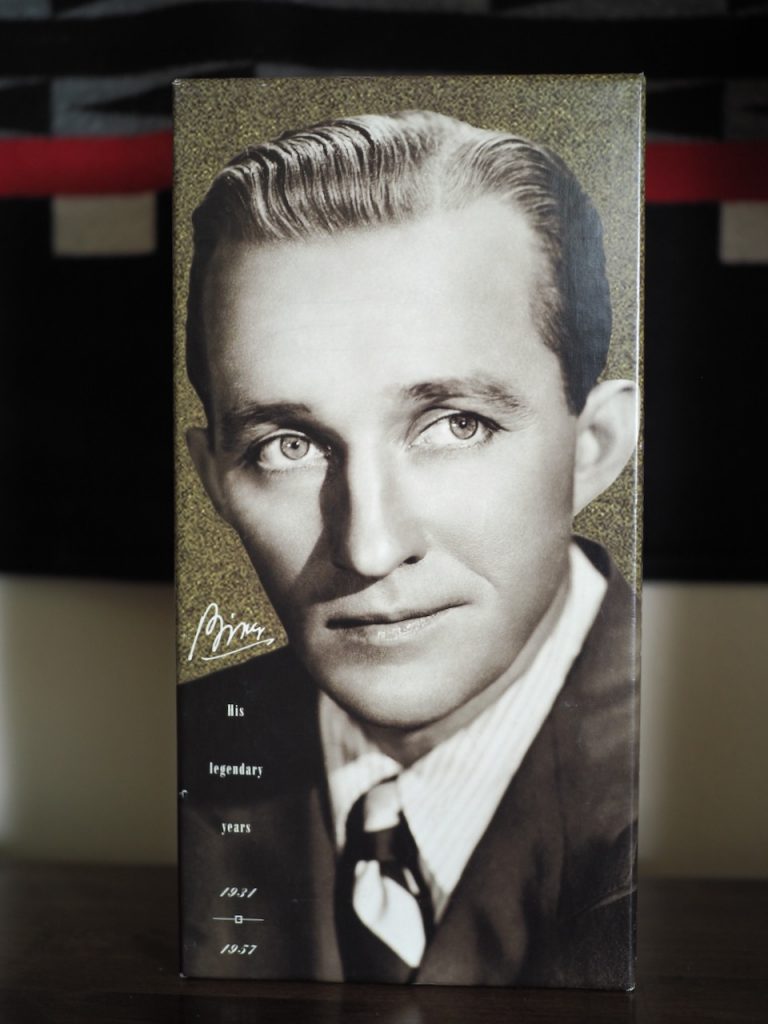
Bing Crosby, The Legendary Years, 1931 to 1957, CD box set.
The CD box set (above), Bing Crosby, The Legendary years, 1931 to 1957, includes recorded performances that spans the electrical and magnetic recording eras. Besides documenting rather remarkable musical performances from American history, this box set makes for a good introduction to the recording technologies used during those eras.
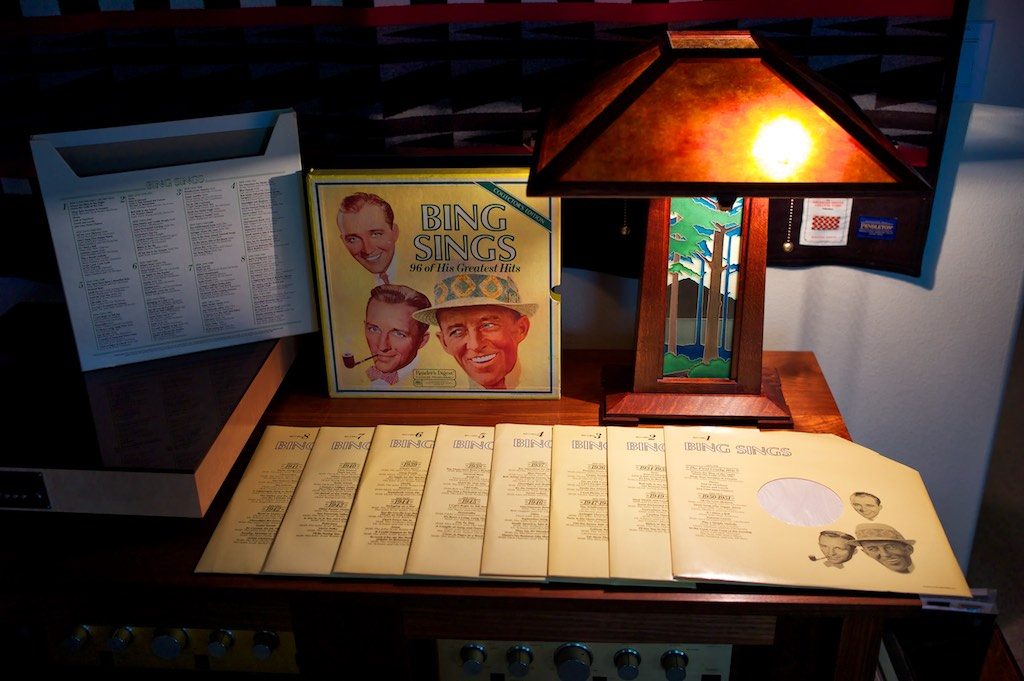
Bing Crosby, Bing Sings 96 of His Greatest Hits, Readers Digest box set of LPs.
This box set was also produced as a Readers Digest box set on LP titled, Bing Sings 96 of His Greatest Hits.
Both the CD and LP box sets provide indispensable glimpses into the recording arts of those periods, and I highly recommend them to you.
The use of magnetic tape and Ampex tape recorders ushered in a new era of high-quality recordings, and along with the contribution of AC biasing, the fidelity of the recorded music signal was improved by increasing its linearity.
AC biasing can be thought of as an active form of equalization used to increase the linearity of the intrinsically non-linear response of magnetic tape, thus dramatically improving its fidelity.
The appearance and use of magnetic tape in recording music ushers us into the period of the "Golden Age" of the recording arts, with "master tapes" featuring wide bandwidth, covering the range of human hearing and then some, high resolution signal quality, impressive documentation of visuospatial recording artifacts, and an overall level of performance that is still cherished by the audio enthusiasts of today.
However, magnetic tape alone was not fully responsible for this impressive advancement in the high-fidelity movement in the recording arts, as in 1951 the now legendary Pultec EQP-1 passive program equalizer developed by Ollie Summerland and Gene Shank - with circuitry licensed from Western Electric - was introduced, and was notable for imbuing a wide-open, warm, airy, feeling to recordings that audiophiles today identify with the best of "analog sound".

Pultec EQP-1A photo courtesy of Vintage King Pro Audio.
Not only that, the Pultec EQP-1 "tone shaper" allowed the recording studio to boost or cut bands of frequencies in the mix, allowing them to provide the listener with the feeling that they were in the room with the musicians, which proved to be a dramatic step forward in experiencing a high-fidelity performance of music at home.
I think you would be surprised to find out how many studios used the Pultec EQP-1 to produce your favorite records from 1951 to today. A lot of them. Chances are pretty good that your favorite records received the Pultec treatment.
Take Rudy Van Gelder who recorded so many jazz greats for Blue Note, Vox, Prestige, Savoy, and others, as one example.
Rudy Van Gelder started using the Pultec EQP-1 equalizer in his studio starting in 1956 to give his recordings that wide-open, warm, airy Pultec sound that jazz lovers cherish today.
That great Van Gelder jazz recording you love was likely given the Pultec treatment, as were so many thousands of other albums from other recording engineers.
The Digital Era of Recording (1975 to the present)
The invention of digital pulse-code modulation was invented by the British scientist Alec Reeves way back in 1937. Bell Labs also worked on developing digital techniques related to pulse-code modulation and data compression during the 1950s.
More germane to our enthusiast audio discussion, development of digital media, recording and playback, specifically for music listening began in earnest in 1960 by Washington State physicist James Russell, who like a lot of Pacific Northwest scientists and engineers of the day ended up working on government research at the highly secretive government laboratories of the above top-secret Hanford Site.
In 1965 James Russell joined the then newly built Pacific Northwest Laboratory located near the Hanford Site next to the Columbia River, now called the Pacific Northwest National Laboratory, that is operated by Battelle Memorial Institute as part of the US National Laboratory system for the United States Department of Energy's Office of Science, where I would also later work for almost the entirety of my career as a physical scientist for the Office of Science.
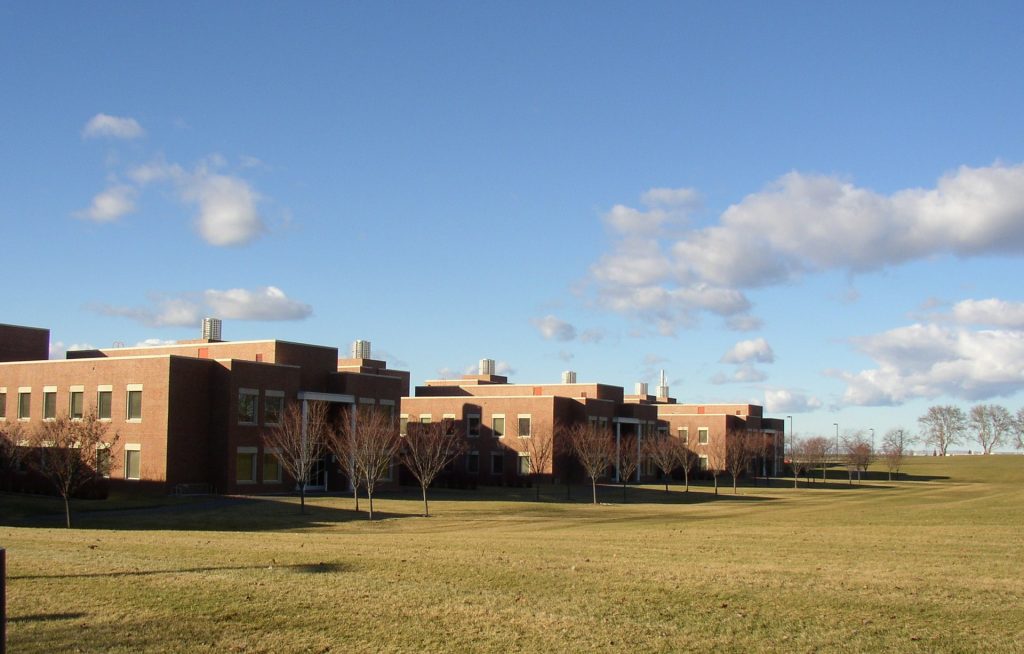
The EMSL research facility located on the campus of PNNL. Public domain photo courtesy of Wikipedia.
While PNNL has a very long list of remarkable research accomplishments, one of the nearest and dearest to my audio heart is the research of James Russell that would provide us with digital recording, playback, and the compact disc, specifically for music enthusiasts.
James Russell was one of us. He loved listening to music on his hifi. I didn't know Mr. Russell personally, as I arrived at PNNL after he had departed, but this is the story that was shared with me by those who did know him and worked with him.
Like a lot of music lovers in the 1950s and 1960s James loved listening to music on his hifi. James wasn't too happy with his turntable and phonograph cartridges though, as they inflicted a lot of wear and tear on the classical music records he loved to listen to.
James thought that digital media would make for a good storage medium for music, but the digital media of the day - digital tape - didn't have enough bits to be suitable for music storage.
Instead of digital tape, Mr. Russell researched optical digital media for storage. Those who approve research budgets were skeptical that something like an analog music waveform could be optically transformed to ones and zeros and then be restored back as an analog music signal, but they gave Mr. Russell the go ahead to pursue his innovative research ideas.
I was told by colleagues while working at PNNL in the 1990s, that Mr. Russell's first experimental digital disks were glass plates with silica gel deposited on them. As music played, the analogue signal was routed to an analog-to-digital converter designed by Mr. Russell, and a laser coupled to the converter created a series of pits in the silica gel, recording the analog signal as a digital signal of ones and zeros. Then in a reverse process, the laser read the information encoded on the disc, routed it through a digital-to-analog converter designed by Mr. Russell, and played it back as music.
Mr. Russell's research credits him with inventing the first optical digital recording and playback system specifically for music. Mr. Russell would go on to do research that would form the basis of DVD technology for recording and playing back video as well.
In 1975 representatives from Philips Electronics visited Mr. Russell, considered his research, but told him that his digital encoding and playback technology wouldn't work for music and video as well as their own analog video disc technology.
Sony and Philips later changed their mind on that topic, and appropriated Russell's technology without permission and used it as their own, and marketed CD players using his technology starting in 1982. Ultimately they had to settle in court for their patent infringements of Russell's research, and pay royalties to Battelle and the Optical Recording Corporation, who owned the patents. Russell was never compensated with royalties for the use of the magnificent technology he invented, which could be viewed as one of the most important technological contributions of the digital era.
Recording in the digital realm proliferated with the availability of professional digital multitrack recorders from Studer, Sony, Mitsubishi, and others, as they became available to recording studios.
There was also a proliferation of digital equalizers offered for sale during the digital recording era, and as increases in computing power became commonplace, the use of software based equalizers for working with digital media also became common.
We are still in an early stage of digital development in the recording industry, and I expect we will see much change in the coming years as massive computing power becomes more readily available to use as a tool.
The history of the digital recording era is just beginning, and its future may bring impressive techniques to the recording arts that we haven't even imagined yet.
Equalization in the Recording Eras
I only mentioned a few aspects of the acoustic, electric, magnetic, and digital eras of recording that touched upon my theme for this article, the equalization of recorded music.
I encourage you to read much more about each of these fascinating recording eras. The musicians involved in performing the music, the equipment developed and used for making the recordings, and the many advancements in the recording arts through the recording eras make for fascinating reading.
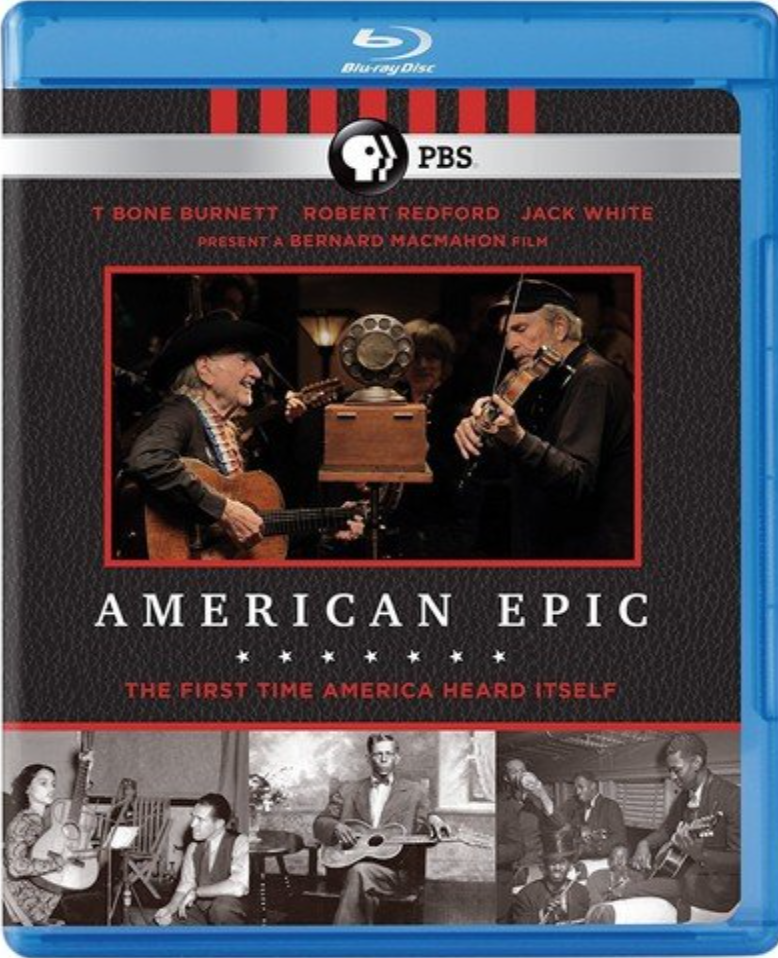
I also encourage you to pick up a copy of the American Epic Blu-Ray set to get a deeper glimpse into the music and recording world of the 1920s using restored Western Electric equipment.
To quote Amazon about the American Epic Blu-Ray box set, "From executive producers T Bone Burnett, Robert Redford and Jack White, this is the story of early American recorded music when the musical strands of a nation first combined to spark a cultural renaissance that forever transformed the future of music and the world. Also includes a feature-length film of in-studio sessions, with leading contemporary artists recording early American music on a restored 1920s recording machine."
Not only do you get to see the equipment that was used to record in the 1920s up close, but you get to hear and watch the recordings being made by contemporary artists like Jack White, the Alabama Shakes, the Americans, Ana Gabriel, Ashley Monroe, the Avett Brothers, Beck, Bettye Lavette, Bobby Ingano, Elton John, Frank Fairfield, Jerron Paxton, Los Lobos, Lost Bayou Ramblers, Nas, Pokey LaFarge, Raphael Saadiq, Rhiannon Giddens, Steve Martin, Edie Brickell, Taj Mahal, Willie Nelson, and Merle Haggard.
I think you'll be very impressed - I was - with how good the recorded sound quality was from that 1920s Western Electric recording system.
During the series they play the live feed from the recording sessions with the Western Electric recording system so you can hear how good the sound quality was in the 1920s.
I guarantee you'll have big goosebumps all over your body while watching American Epic, ones that you will not be able to pound down with a mallet!
Equalization of music program material has been routine throughout the acoustic, electric, magnetic and digital eras of recording, and has greatly improved the program material made available to us as listeners.
It might come as a surprise to many contemporary audio enthusiasts, but there is actually no such thing as an "absolute sound" with respect to a recording of music.
All recordings of music are subject to the "observer effect" of physics, where the acoustic waves of the original musical event are altered by the acoustics of the recording venue, the instruments used to document the original musical performance, from microphones, microphone preamps, connecting cables, Ampex tape recorders, the tape used, or digital recorders, the mixing and mastering application of equalization, and the like.
Those albums of music that you and I so enjoy listening to from the acoustic, electric, magnetic, and digital recording eras are a group effort of the combined artistry of the musicians and the artful application of the voicing capabilities of the recording and equalization equipment used by studio personnel to produce a unique work of musical art that becomes the record album you listen to.
Every record album is a unique artistic document of a musical performance that is the result of the music played by the musicians, the acoustics of the recording venue, the number and types of microphones used, the mic preamps used, the recorders used, the connection cables used, etc., all artfully sculpted to give you that final work of art, the record album.
Equalization in Enthusiast Audio
Once that record album is on your turntable, more equalization is applied in the form of the RIAA curve of the phono equalizer.

The adjustable Pass Labs XP-17 phono equalizer.
Most phono equalizers in audio have fixed equalization circuits that are not adjustable by the listener, but a few of the more advanced phono equalizers like the Pass Labs XP-17 phono equalizer (above) I wrote about for Positive Feedback (HERE) have "operator adjustable equalization" to optimize phono cartridge performance in terms of gain, and resistive and capacitive loading, which provides a significant improvement in phono cartridge performance.
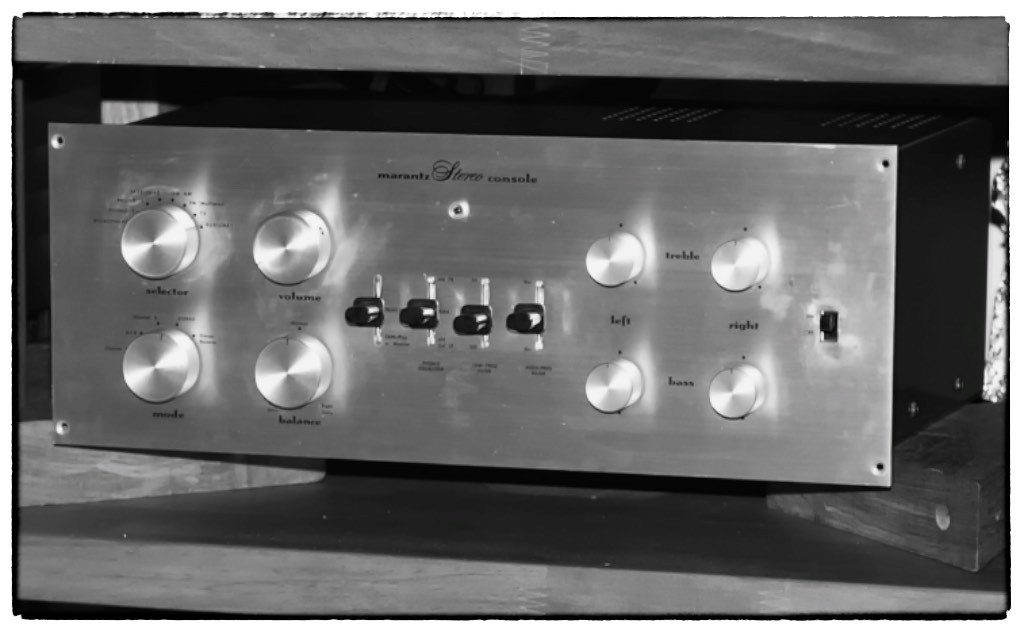
Yazaki-san's vintage Marantz 7k preamplifier.
In vintage days the best audio equipment, like the revered Marantz Model 7 preamplifier so beloved by our friend Yazaki-san, included tone controls for equalization. In the photo above you can see the four adjustments for equalization on the right side of the Marantz Model 7.

Vintage McIntosh MX110Z tuner-preamplifier.
My own vintage McIntosh MX110Z tuner-preamplifier also included tone controls for equalization. Tone controls are a handy feature that are sadly missing from contemporary enthusiast hifi.
Enthusiast audio abandoned equalization thinking that its added complexity compromised the sound quality of the audio system, and that was definitely a possibility when low quality equalization techniques were used.
The "simpler is better" paradigm can often yield positive results in an audio system, until it doesn't.
Personally I do like simplicity in an audio system, but I also recognize that the studios systems that create the stellar albums of music we listen to and cherish are not simple. Far from it.
That original music performance's sound that is recorded is influenced by the recording venue acoustics, the microphones used, the mic preamps used, channel strips, compressors, limiters, equalizers, the cables used, the monitors used, the mixing process, the mastering process, the artful sensibilities of the studio personnel, and all the steps in the production process that delivers the analog or digital album that you buy as an end user to listen to.
The "simple is better" paradigm sounds like a good idea, and it is up to a point, but it is somewhat naive perspective when you look at the big picture of music production.
The reality is that there is a fair amount of complexity involved in bringing you your cherished album of high-fidelity music, and sometimes that added complexity is desirable for delivering higher performance.
Like with end user system equalization, for example. In my opinion, we enthusiast audio aficionados missed the boat when we exiled our ability to perform equalization of our high-performance audio systems to match the highly variable program material from the acoustic, electric, magnetic, and digital recording eras.
The narrowly focused fixed voicing of many contemporary enthusiast audio systems has resulted in the dominance of amusical sounding audio systems that are marketed today.
Personally, I think we would be much better off today if consumer audio equalization had been improved and incorporated into our hifi systems so that we could achieve a musical balance with varied program material.
If those expensive album remasters we routinely buy sound better after equalization in the studio, what makes us think that adding studio quality equalization to our own hifi systems wouldn't provide the same sort of benefits to sound quality?
In actuality, it would likely greatly improve our overall sound quality to be able to optimize the equalization of our system as a whole, or specifically for albums from the different recording eras that vary all over the place in sound quality.
Instead we try to equalize and improve our sound quality - often unsuccessfully - through changing vacuum tubes, resistors, capacitors, inductors, transformers, interconnects, speaker cables, power cords, wall outlets, phono cartridges, swapping preamplifiers, phono stages, amplifiers, and loudspeakers in our systems.
I'm not discounting the value in any of that, I do all of that myself as an audio enthusiast and writer. That can be fun for sure, but wouldn't it make a lot of sense to add studio quality equalization to high-performance audio systems so that they can be optimized to best fit our system, our music, and our personal tastes?
I think so. More to come in Part 2.
As always, thanks for stopping by, and may the tone be with you!





























